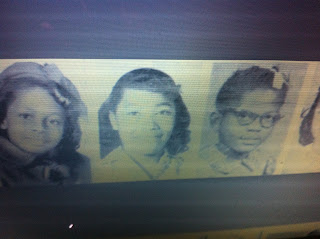IN THESE GROUPSCynthia Wesley was one of four young victims of a 1963 church bombing that focused public attention on racial violence in the South.
Synopsis
Cynthia Wesley was born in Birmingham, Alabama, on April 30, 1949. On September 15, 1963, the 14-year-old Wesley and three other young girls were killed in a church bombing perpetrated by members of the Ku Klux Klan. This crime marked a turning point in the Civil Rights Movement. Three men responsible for the terrorist act were brought to justice between 1977 and 2002.
Early Life and Death
Cynthia Dionne Wesley was born in Birmingham, Alabama, on April 30, 1949. She attended the 16th Street Baptist Church with her adoptive parents, Claude and Gertrude Wesley. On the morning of Sunday, September 15, 1963, a 14-year-old Wesley was in the church basement room with a group of other children.
At 10:22 a.m., a bomb exploded under the steps of the church. Wesley died in the blast, along with 11-year-old Denise McNair, and 14-year-olds Carole Robertson and Addie Mae Collins. In addition to the four fatalities, more than 20 people were injured during the incident.
Political Context
The bombing that killed Wesley and the three other girls was a racially motivated hate crime. It occurred in the context of social upheaval in the city of Birmingham, known as "Bombingham" after a spate of terrorist activities.
In the months leading up to the church bombing, the Civil Rights Movement had made strides in the city of Birmingham. In May 1963, city and civil rights leaders negotiated the integration of public spaces, sparking widespread violence. The 16th Street Church, frequently used as a meeting place for leaders including Martin Luther King Jr. and Ralph D. Abernathy, was an obvious target for this activity.
The shocking murder of the four girls drew national attention. A memorial service for three of the four—including Wesley—attracted an estimated 8,000 mourners.
Prosecutions
Despite its prominence, the bombing remained an unsolved case until the 1970s. Robert Chambliss, a member of a Ku Klux Klan group seen placing the dynamite under the church steps, was arrested in 1963 but tried only for the illegal possession of explosives. The case remained dormant until 1971, when Attorney General William Baxley reopened it. Baxley obtained FBI files containing substantive information, including the names of suspects, which had remained unreleased by J. Edgar Hoover in the 1960s. In a later statement, the FBI stated that their investigation had been impeded by the lack of witness cooperation in Birmingham.
In 1977, 73-year-old Robert "Dynamite" Chambliss was convicted of the murder of the four girls and sentenced to life in prison. Two other perpetrators—Thomas Blanton Jr. and Bobby Frank Cherry—were convicted in 2001 and 2002, respectively. A fourth suspect, Herman Frank Cash, died in 1994, before he could face charges.
Advertisement — Continue reading below
Legacy and Mystery After Death
Wesley and the other victims became instant and enduring symbols of racial violence, styled as martyrs in the struggle for civil rights. Wesley's story is told in the 1997 Spike Lee film 4 Little Girls, a documentary on the bombing and its political significance. In 2013, the United States Congress awarded each girl the Congressional Gold Medal.

























































































































No comments:
Post a Comment